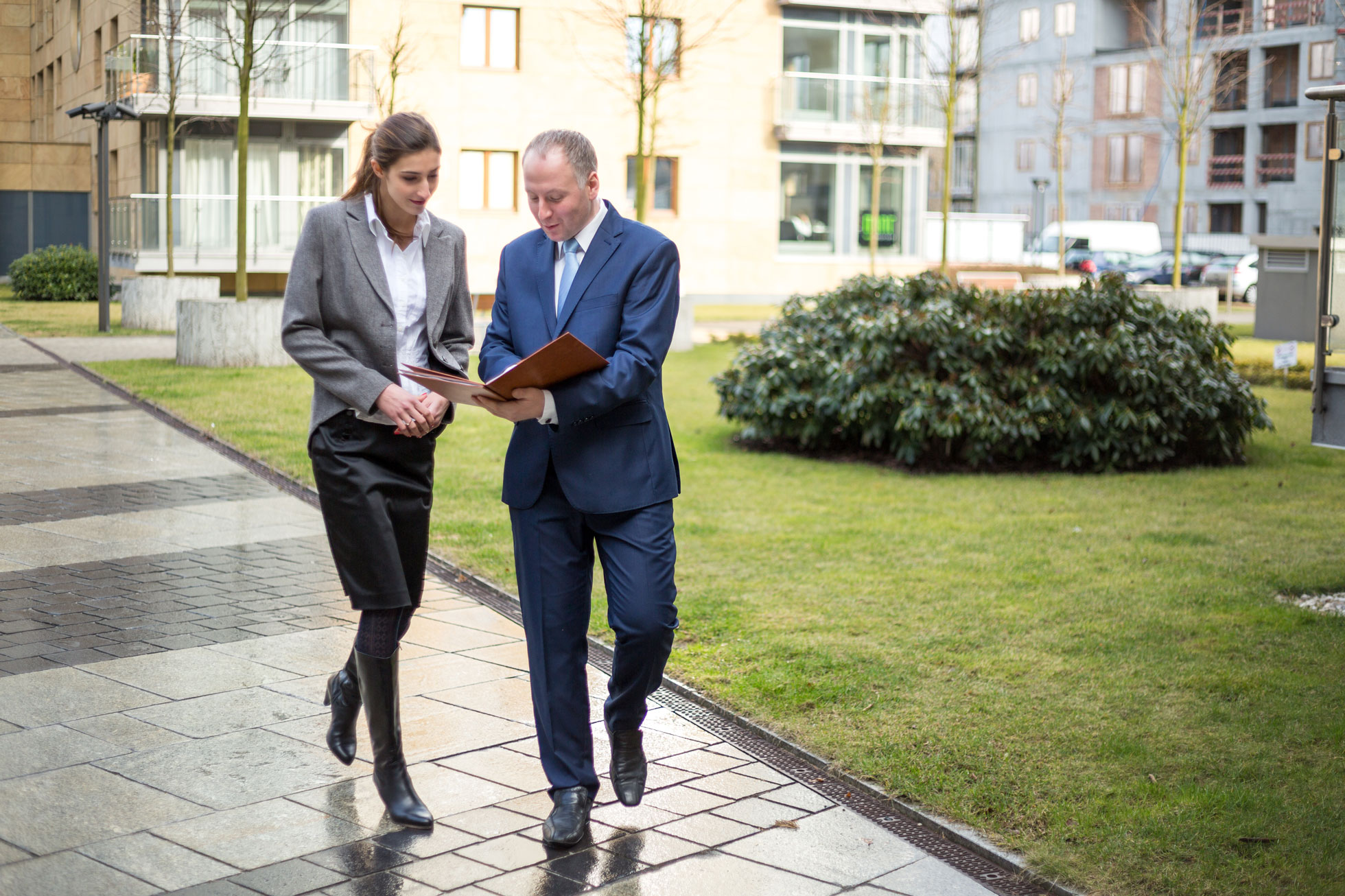
Think Outside the Conference Room
5 Benefits of walking meetings
Many executives spend hours looking for ways to improve their team’s productivity, creativity, collaboration, and workplace health. Recent studies show, walking meetings may be a simple solution to improve outcomes in each of these key areas. Walking meetings convert meetings that would normally be held sitting down in an office or conference room into mobile activities. They offer team members a chance to get a change of scenery and add some movement to their day while still accomplishing the meeting’s overall purpose.
Working in an office environment can negatively impact employees’ work performance, physical health, and mental wellbeing. According to research from the Mayo Clinic, sitting for extended periods of time can lead to an increased risk for obesity, high blood pressure, high blood sugar, excess body fat around the waist, and unhealthy cholesterol levels. While many offices have introduced standing desks to encourage their employees not to sit all day, these are not viable replacements for physical activity throughout the day.
The workplace can also impact employee stress levels. The American Institute of Stress reports higher stress levels from work can affect employees’ mental health and cause significant decreases in productivity. According to AIS, 83% of U.S. workers suffer from work-related stress, and U.S. businesses can lose up to $300 billion yearly because of this stress among their employees.
Walking meetings are a simple but effective solution to each of these problems. They offer multiple benefits for employers and employees alike. These benefits include increased creativity and problem-solving ability, improved productivity, better health, and a stronger team dynamic.
Increased Creativity and Problem-solving
When someone hits a creative block, there are many methods they can take to resolve the block. Any activity that gets them thinking differently can help navigate around a creative block, making a walking meeting an ideal solution to this issue. According to research by Marily Oppezzo and Daniel L. Schwartz, walking meetings can increase creativity and divergent thinking by 81-100%. Divergent thinking is critical to office work because it signifies when a person can let go of the world they are working in to think more freely and openly.
Improved Productivity
Walking meetings can also improve overall productivity. By taking a meeting out of the office and away from potential distractions, walking meetings can restore attention and focus as well as help clear away the mental fatigue of sitting in a chair all day. Walking has been shown to boost energy levels, meaning when employees return to the office after a meeting, they will have greater energy and focus.
Better Health
Studies have shown that sitting for prolonged periods can be as detrimental to one’s health as smoking or obesity. However, according to the Mayo Clinic, 60 to 75 minutes of moderate physical activity per day can counter these negative effects on employee health. The Mayo Clinic also references the profound impact that even leisurely activity can have by burning calories, increasing energy, maintaining muscle tone, and improving mental well-being. For walking meetings, the focus is less on getting in a workout at work and more on increasing time spent moving throughout the day. If meetings are taken outdoors, employees also benefit from the fresh air and sunlight.
Teamwork Building
By breaking away from the traditional meeting framework, team members are encouraged to interact and engage with each other on a more personal and friendly level during walking meetings. The hierarchical structure of a job becomes less of a factor when an executive and employee walk side-by-side. This increase in teamwork can lead to greater collaboration among employees and added motivation to gain team successes.
Tips for Implementing Walking Meetings
- Start small. Shift one or two meetings per week to a walking meeting. Then work up to one meeting per day, or multiple walking meetings per day. Look for opportunities to switch out interoffice phone calls with a short walking meeting.
- Be Flexible. Don’t make walking meetings mandatory. Ask employees how they feel about this change and don’t force employees who are hesitant to participate. Try to make walking meetings as accessible as possible for employees with health concerns. I.e. walk on wheelchair-accessible routes, stay indoors when it’s raining, ensure the pace is comfortable for everyone.
- Get Creative. If your meeting requires a slide presentation, send it out ahead of time for people to view on their phones while they walk. If it’s raining, find a route around the interior of your office where you can walk without disturbing other employees. Encourage employees to bring athletic shoes to keep at their desk so they stay comfortable while walking.
- Make it fun. Incentivize employees to schedule their own walking meetings by offering a prize for scheduling the most walking meeting per week, or purchasing a FitBit for employees who participate in 100 walking meetings per year.
Walking meetings are a great tool for improving employee productivity, creativity, health, and team-unity. Don’t underestimate the powerful impact this simple change to meeting structure can have. Try it out at your next meeting to see how it can work for your office.




